G.Skill Trident Z5 Royal DDR5-6400 C32 64GB Review
Our search for the most recommendable 64GB DDR5 kit has presented a few stark revelations, the first being that double-sided modules populated with 16 of the old Hynix 16Gb ‘A-die’ ICs are still fast enough to outpace a kits of single-sided modules that use eight of the latest 32Gb Micron parts. Despite the history of single-sided modules being more conducive to tight timings, and despite having an onboard clock generator that was supposed to further enhance its ability to support tight timings, the new parts have yet to overcome the old. (We’ve again used the old builder-level term “sided” rather than the industry standard term “rank” because DDR5 splits each side’s 64-bit interface into two 32-bit pathways, and calling a module that has four 32-bit pathways “dual rank” feels incongruous.)
Three years of platform development hasn’t escaped DRAM module makers as the latest kits have data rates and timings that we could only have dreamed of in the early days: The impact was so substantial that the first revamped kit has already received our highest award: Today, G.Skill wants that award. And to that end, it’s sent its similarly-priced but spectacularly stylized Trident Z5 Royal DDR5-6400 C32.
| G.Skill Trident Z5 Royal F5-6400J3239G32GX2-TR5S | |
| Capacity | 64 GB (2x 32GB) |
| Data Rate | DDR5-6400 (XMP) |
| Primary Timings | 32-39-39-102 (2T) |
| Voltage | 1.40 Volts |
| Height | 44mm |
| Warranty | Lifetime |
| Price When Tested | $280.00 |
All That Glitters
A combination of stone-textured light diffusors and polished, electroplated heat spreaders are what separate G.Skill’s ‘Royal’ series from its other parts. Unlike other models within the Royal series, the 64GB version of its DDR5-6400 is available in Silver but not Gold. Likely plated in chrome (but possibly tin), G.Skill includes a polishing cloth to keep this silvery finish spotless, along with a case sticker, instruction card and a cardboard band to hold the box shut (just in case you’d like to keep it).
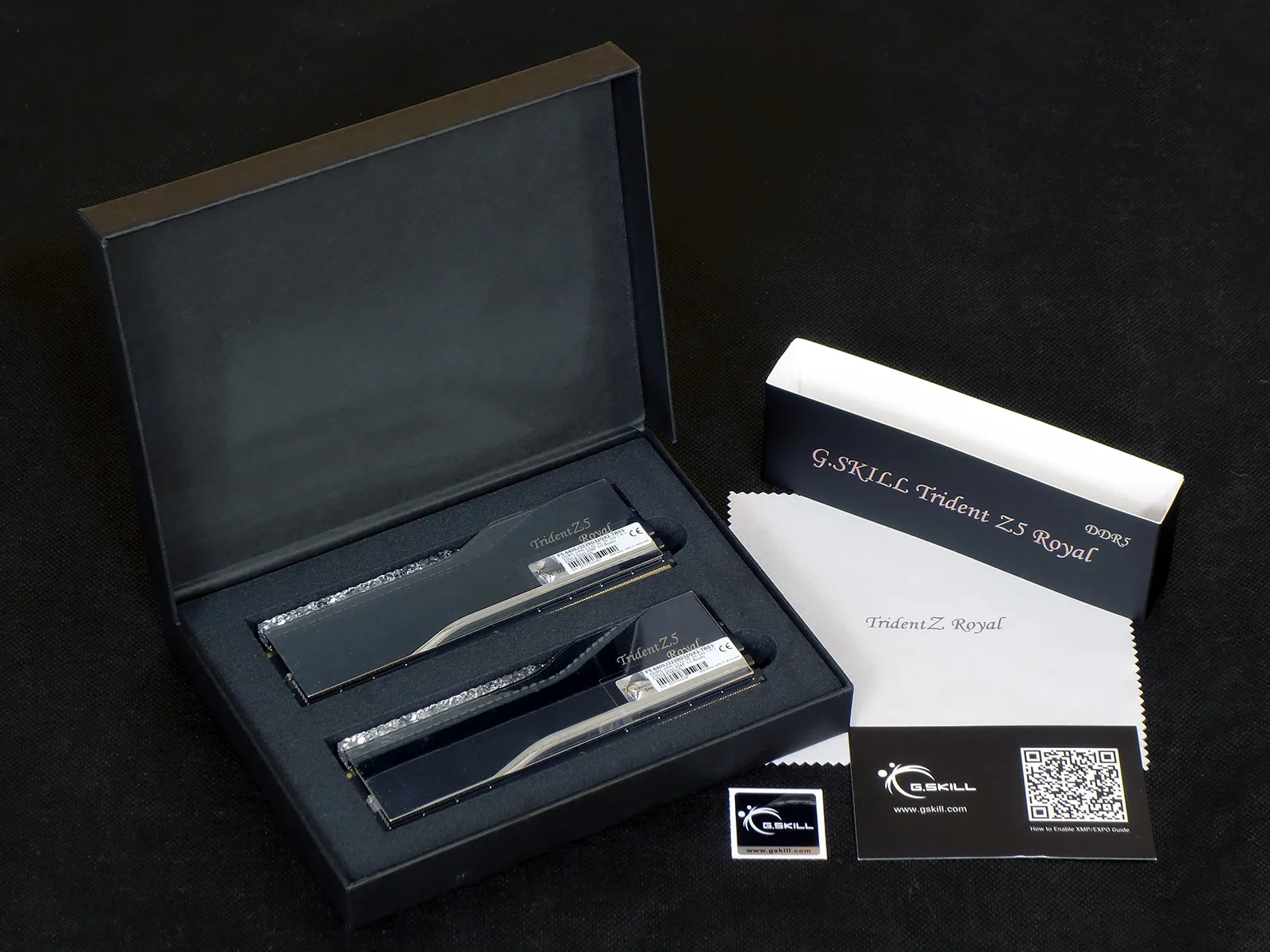
Its part number of F5-6400J3239G32GX2-TR5S indicates that the modules are DDR5-6400 with CAS 32–39-39 timings, using 32GB modules as a kit of two (X2). The tail of the part number describes the appearance as Trident Royal Z5 in Silver.
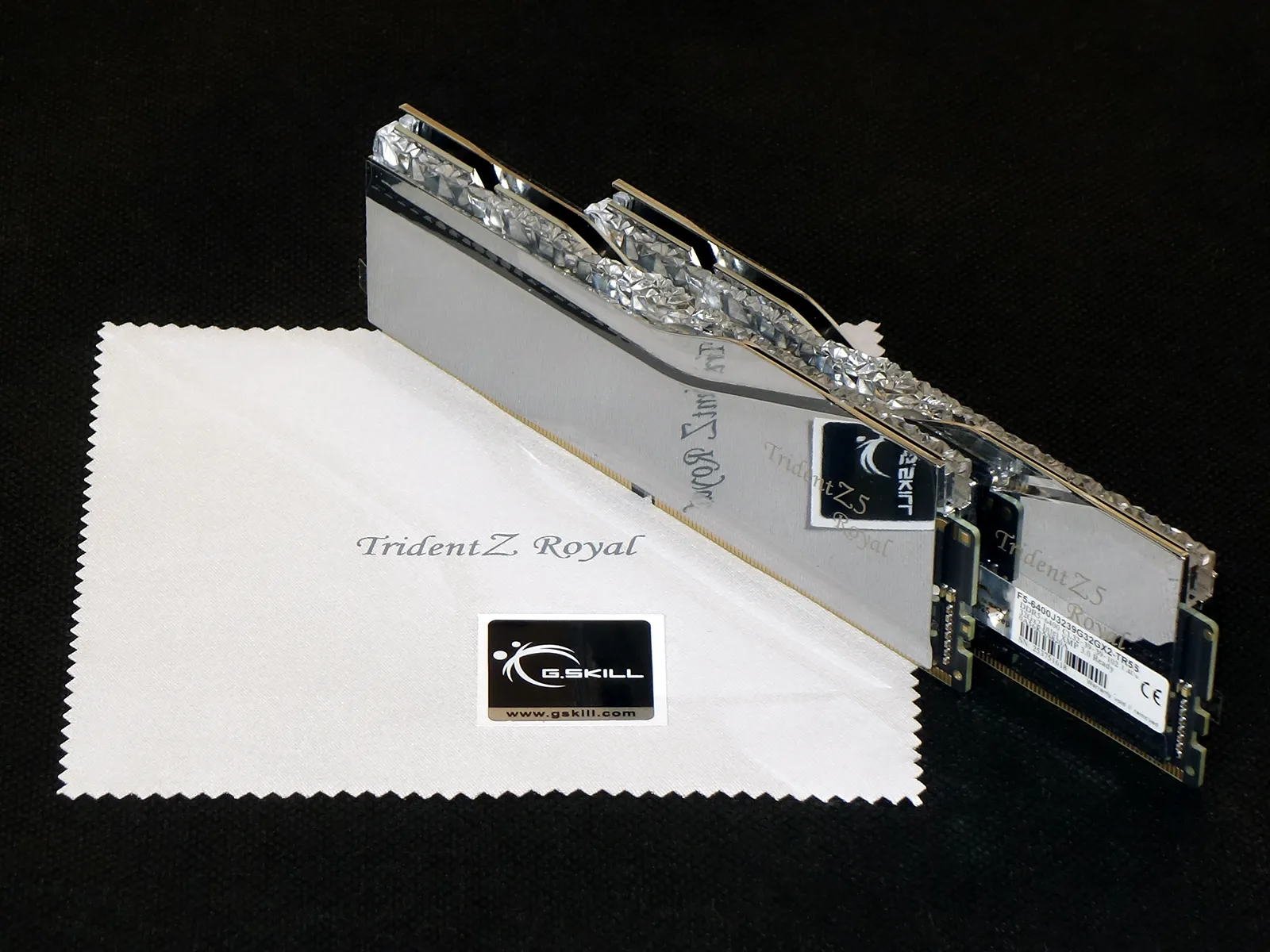
Since G.Skill sells its Intel XMP and AMD EXPO kits under different part numbers, the one we received for our LGA 1851 platform gets enhanced DDR5-6400 timings using XMP alone. Our motherboard defaulted to the program’s best non-XMP value of DDR5-4800 before we got around to entering our motherboard firmware’s GUI to enable what appeared to be its sole compatible XMP.
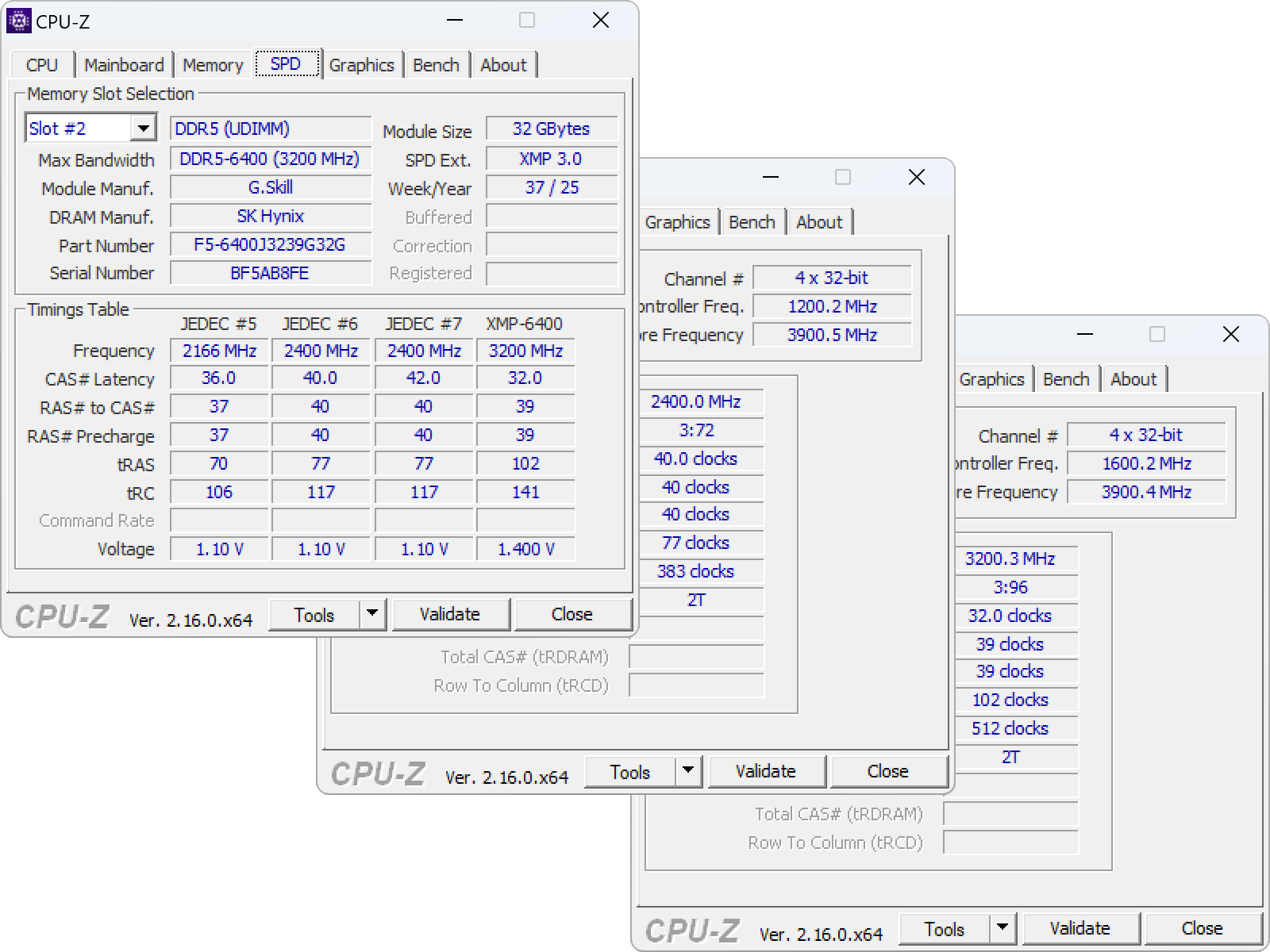
Since our motherboard only showed one XMP, we were surprised to find numerous XMP values in the CPU-Z readout that included DDR4-4800 at enhanced CAS 24 timings and DDR4-5600 at an enhanced CAS 28. Those are two of the data rates we’ve been using in our tune-ability analysis, and we’re curious to see how much lower we can push those delays.
| Memory SPD (as reported by CPU-Z v2.16.0 x64) | XMP profile | XMP-6400 | |
| Memory type | DDR5 | Specification | Lv1-6400C32 |
| Module format | UDIMM | VDD Voltage | 1.400 Volts |
| Module Manufacturer(ID) | G.Skill | VDDQ Voltage | 1.400 Volts |
| SDRAM Manufacturer (ID) | SK Hynix | VPP Voltage | 1.800 Volts |
| Size | 32768 MBytes | Memory Controller Volt. | 1.400 Volts |
| PMIC #0 | Enabled | Min Cycle time | 0.312 ns (3200 MHz) |
| PMIC #0 Manufacturer | Richtek Power | Max CL | 32 |
| PMIC #1 | Disabled | Min tRP | 12.17 ns |
| PMIC #2 | Disabled | Min tRCD | 12.17 ns |
| Clock Driver (CKD) | Disabled | Min tRAS | 31.82 ns |
| Max bandwidth | DDR5-6400 (3200 MHz) | Min tRC | 43.99 ns |
| Max JEDEC | DDR5-4800 (2400 MHz) | XMP timings table | CL-tRCD-tRP-tRAS-tRC-CR @ frequency (voltage) |
| Channels | 2 | XMP #1 | 22.0-27-27-71-97-n.a @ 2203 MHz (1.400 Volts) |
| Part number | F5-6400J3239G32G | XMP #2 | 24.0-30-30-77-106-n.a @ 2403 MHz (1.400 Volts) |
| Manufacturing date | Week 37/Year 25 | XMP #3 | 26.0-32-32-83-115-n.a @ 2604 MHz (1.400 Volts) |
| Nominal Voltage | 1.10 Volts | XMP #4 | 28.0-35-35-90-124-n.a @ 2804 MHz (1.400 Volts) |
| Temperature Limit | 55.0 °C (high), 85.0 °C (critical) | XMP #5 | 30.0-37-37-96-133-n.a @ 3004 MHz (1.400 Volts) |
| EPP | no | XMP #6 | 32.0-39-39-102-141-n.a @ 3200 MHz (1.400 Volts) |
| XMP | yes, rev. 3.0 | XMP #7 | 34.0-39-39-102-141-n.a @ 3200 MHz (1.400 Volts) |
| AMP | no | XMP #8 | 36.0-39-39-102-141-n.a @ 3200 MHz (1.400 Volts) |
| EXPO | no | XMP #9 | 38.0-39-39-102-141-n.a @ 3200 MHz (1.400 Volts) |
| JEDEC timings table | CL-tRCD-tRP-tRAS-tRC @ frequency | XMP #10 | 40.0-39-39-102-141-n.a @ 3200 MHz (1.400 Volts) |
| JEDEC #1 | 22.0-23-23-43-65 @ 1333 MHz | XMP #11 | 42.0-39-39-102-141-n.a @ 3200 MHz (1.400 Volts) |
| JEDEC #2 | 28.0-28-28-54-82 @ 1666 MHz | XMP #12 | 46.0-39-39-102-141-n.a @ 3200 MHz (1.400 Volts) |
| JEDEC #3 | 30.0-30-30-58-88 @ 1800 MHz | XMP #13 | 48.0-39-39-102-141-n.a @ 3200 MHz (1.400 Volts) |
| JEDEC #4 | 32.0-33-33-62-95 @ 1933 MHz | XMP #14 | 50.0-39-39-102-141-n.a @ 3200 MHz (1.400 Volts) |
| JEDEC #5 | 36.0-37-37-70-106 @ 2166 MHz | XMP #15 | 52.0-39-39-102-141-n.a @ 3200 MHz (1.400 Volts) |
| JEDEC #6 | 40.0-40-40-77-117 @ 2400 MHz | XMP #16 | 54.0-39-39-102-141-n.a @ 3200 MHz (1.400 Volts) |
| JEDEC #7 | 42.0-40-40-77-117 @ 2400 MHz | XMP #17 | 56.0-39-39-102-141-n.a @ 3200 MHz (1.400 Volts) |
We confirmed Trident Z5 Royal’s ability to accept ARGB instructions via our motherboard’s Polychrome Sync application as well as SignalRGB: It appears to support a wider range of simultaneous colors than our previously-tested Fury kit both in SignalRGB and by visual verification, which likely indicates that it has more LEDs
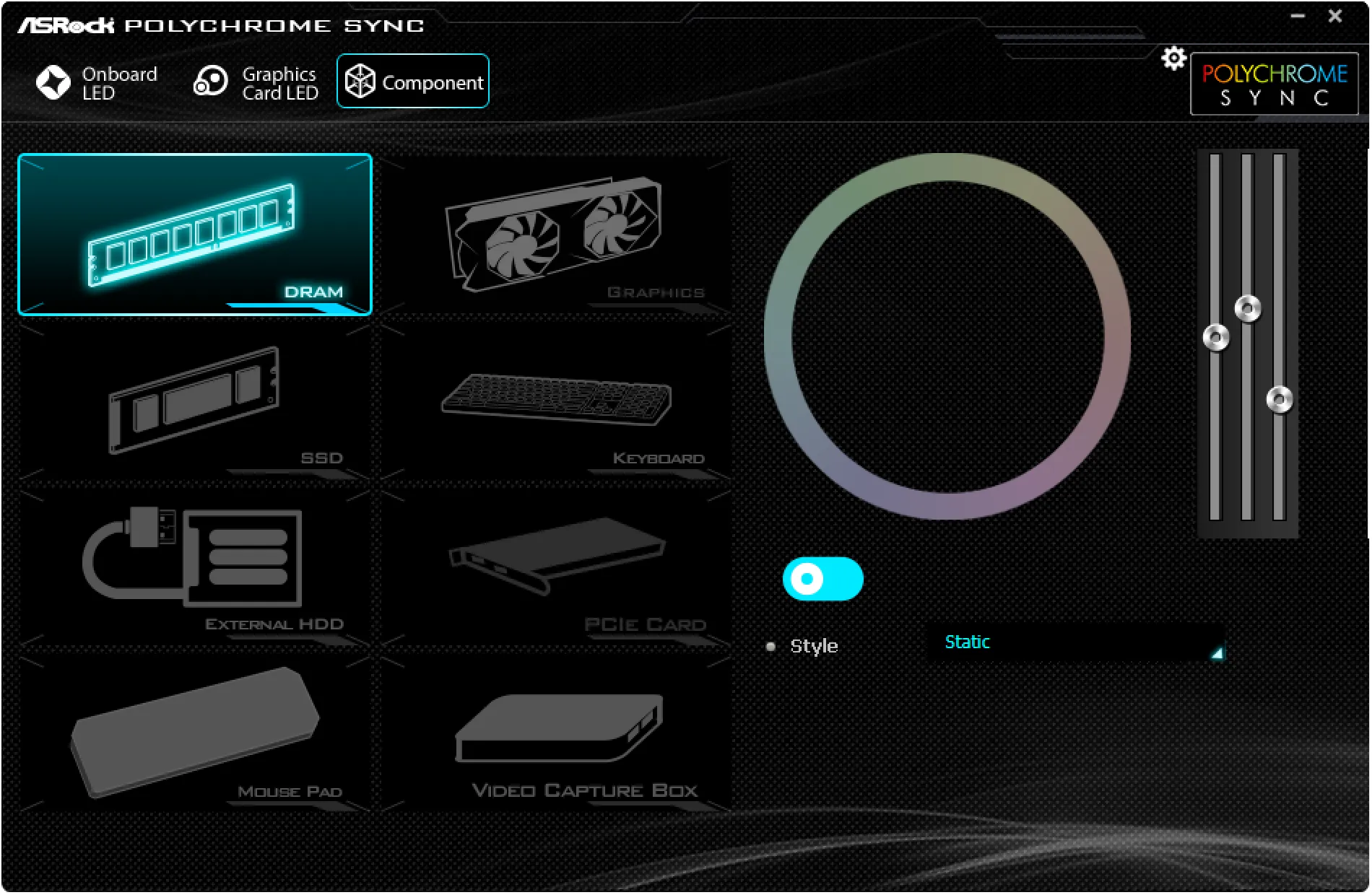
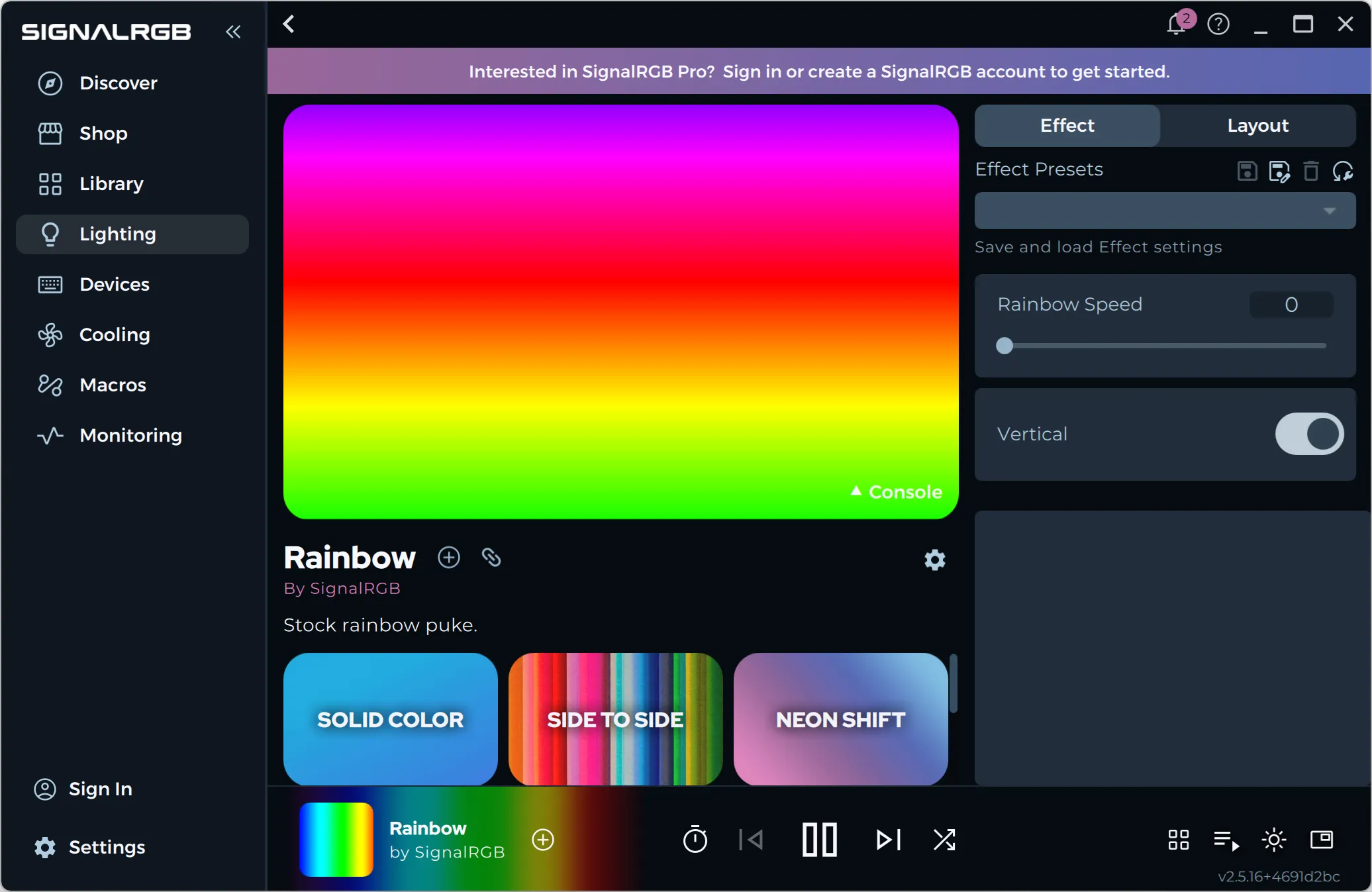
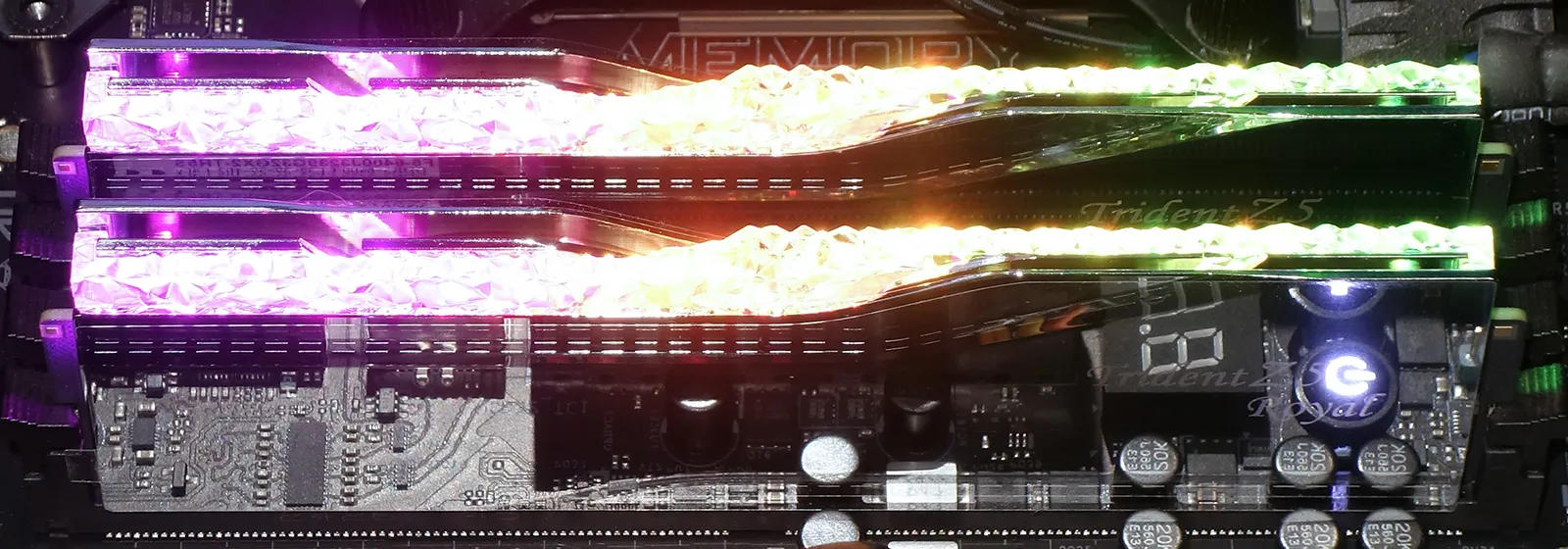
Our Test
Intel’s Core Ultra 9 285K will provide the load for evaluating today’s Trident Z5 Royal 64GB kit, while ASRock’s Z890 Taichi Lite provides the stable input voltage and timing adjustments to get us to our goals.
| Test Hardware | |
| CPU | Intel Core Ultra 9 285K: 24 Cores, 36M Cache, 3.2- 5.70 GHz, LGA 1851 |
| CPU Cooler | Alphacool Core 1 Aurora CPU, VPP655 with Eisbecher D5 150mm, NexXxoS UT60 X-Flow |
| Motherboard | ASRock Z890 Taichi Lite, BIOS 3.04 |
| Graphics | ASRock RX 7700 XT Phantom Gaming 12GB OC |
| Hard Drive | Crucial T700 PCIe Gen5 2TB M.2 SSD |
Trident Z5 Royal DDR5-6400 C32 Overclocking & Latency Tuning
Our overclocking attempts initially showed the Trident Z5 Royal kit hitting exactly the same limits as Fury Beast, though when we tried a reboot after its crash at 7733 Gear 2 the system came back up and remained stable. That feels too much like happenstance to label these as anything other than identical kits, at least south of the RGB LEDs.
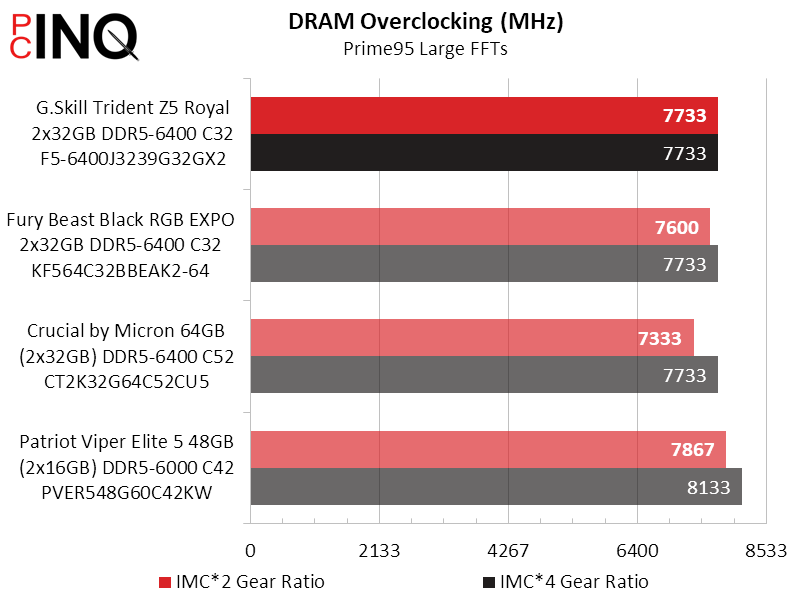
We tried every trick in the book to differentiate Trident Z5 Royal from Fury Beast DDR4-6400 C32 kits, but both ended up with identical minimum primary latency timings. Lower is better when it comes to latency, but both kits ended up shaving no more than two cycles off rated DDR5-6400 timings without crashing.
| Lowest Stable Timings | |||
| DDR5-6400 | DDR5-5600 | DDR5-4800 | |
| G.Skill Trident Z5 Royal 2x32GB DDR5-6400 C32 | 30-37-37-74 (2T) | 28-33-33-66 (2T) | 24-27-27-54 (2T) |
| Fury Beast Black RGB EXPO 2x32GB DDR5-6400 C32 | 30-37-37-74 (2T) | 28-33-33-66 (2T) | 24-27-27-54 (2T) |
| Crucial by Micron 64GB (2x32GB) DDR5-6400 C52 | 40-48-48-96 (2T) | 38-42-42-84 (2T) | 34-34-34-68 (2T) |
| Patriot Viper Elite 5 48GB (2x16GB) DDR5-6000 C42 | 32-38-38-76 (2T) | 28-33-33-66 (2T) | 24-28-28-56 (2T) |
Trident Z5 Royal DDR5-6400 C32 Benchmark Results
There were some wins and some losses, but those were too small to notice and cancelled each other out in in average: Trident Z5 Royal is every bit the performer of Fury Beast, and nothing more (click to enlarge).
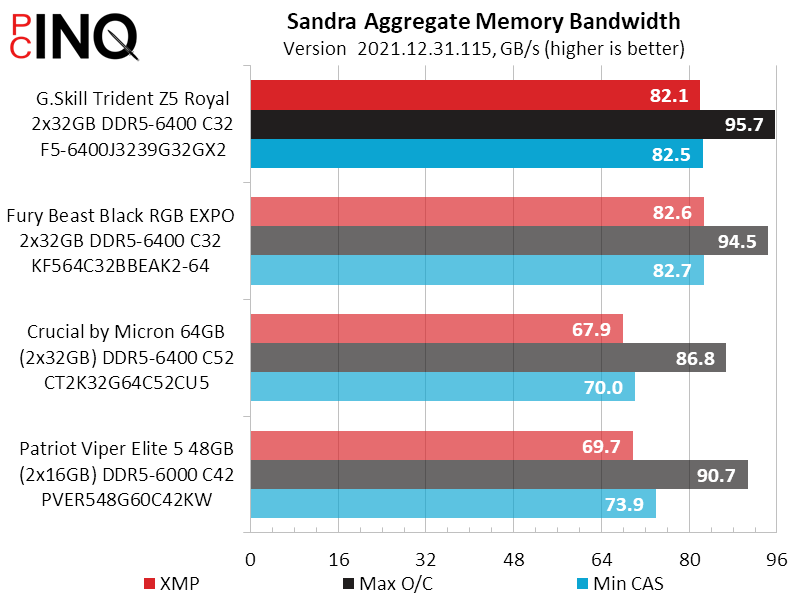
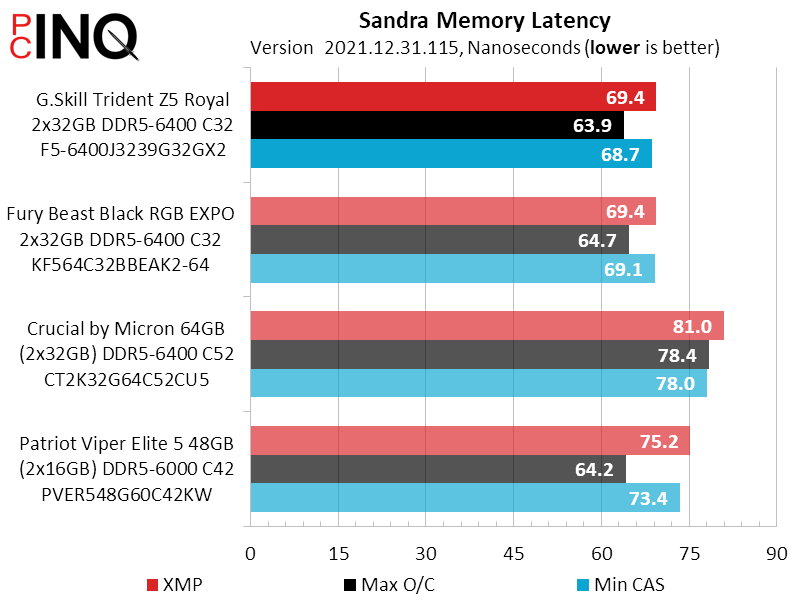
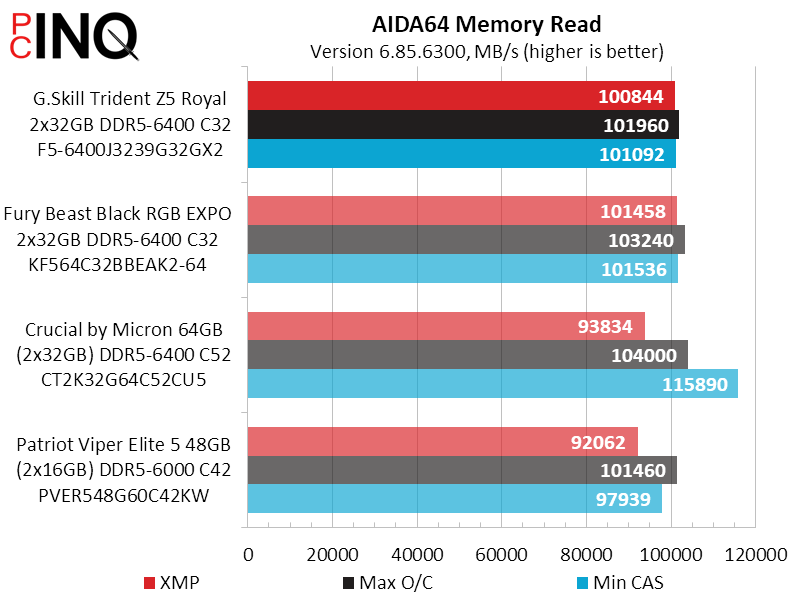
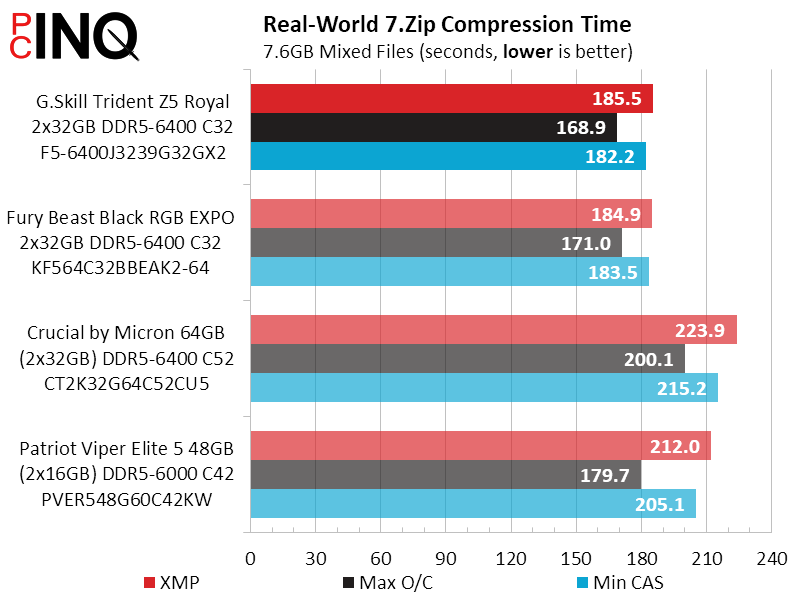
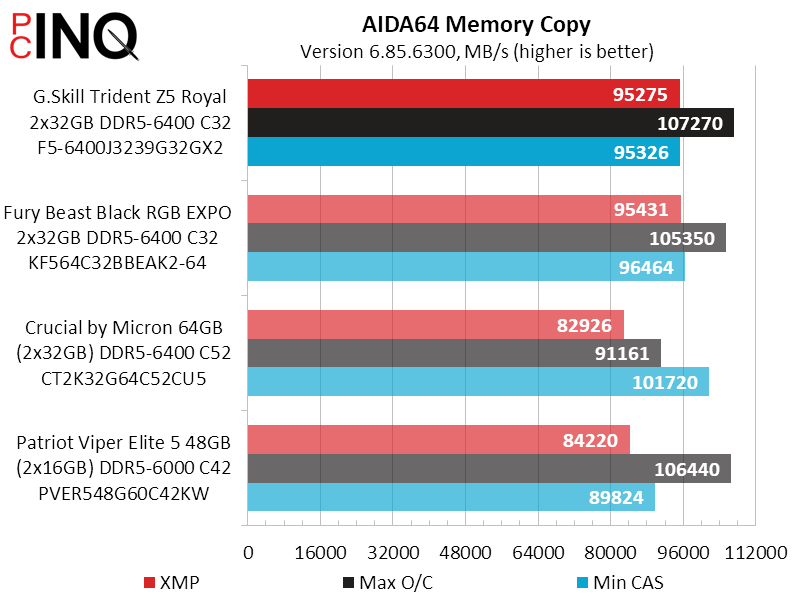
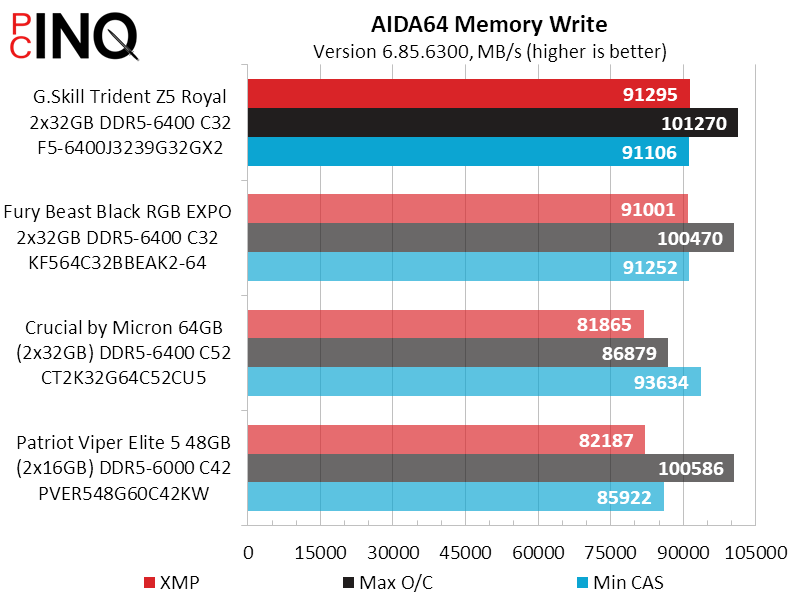
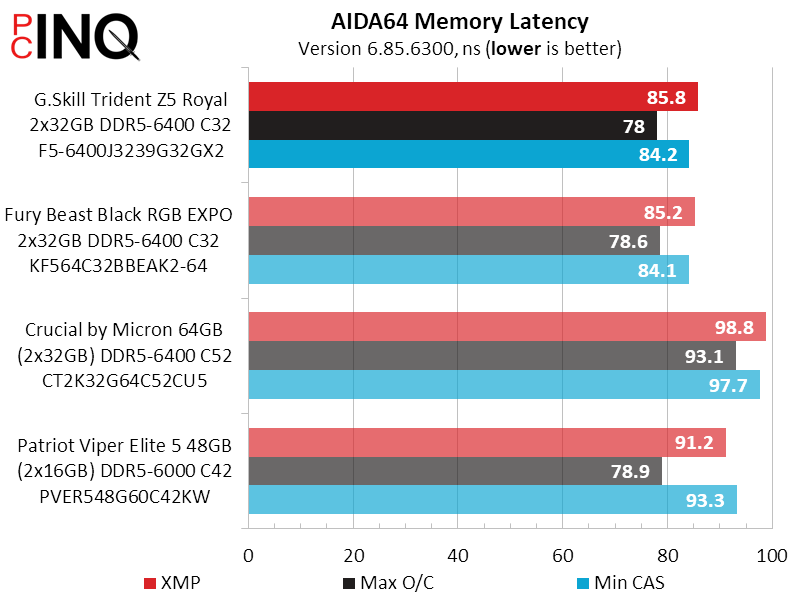
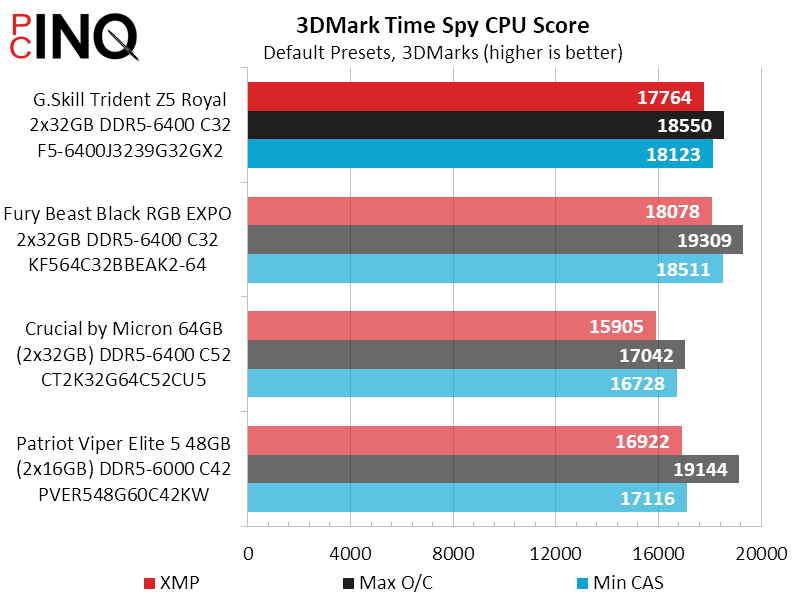
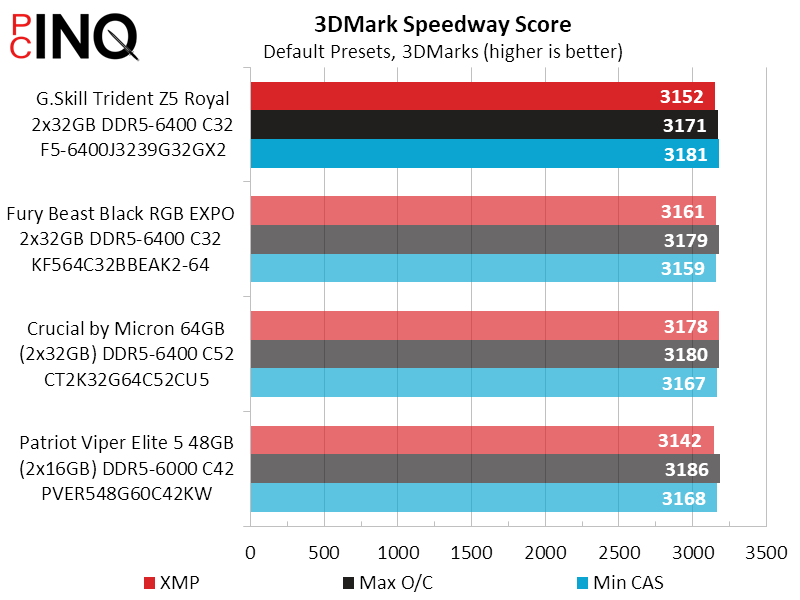
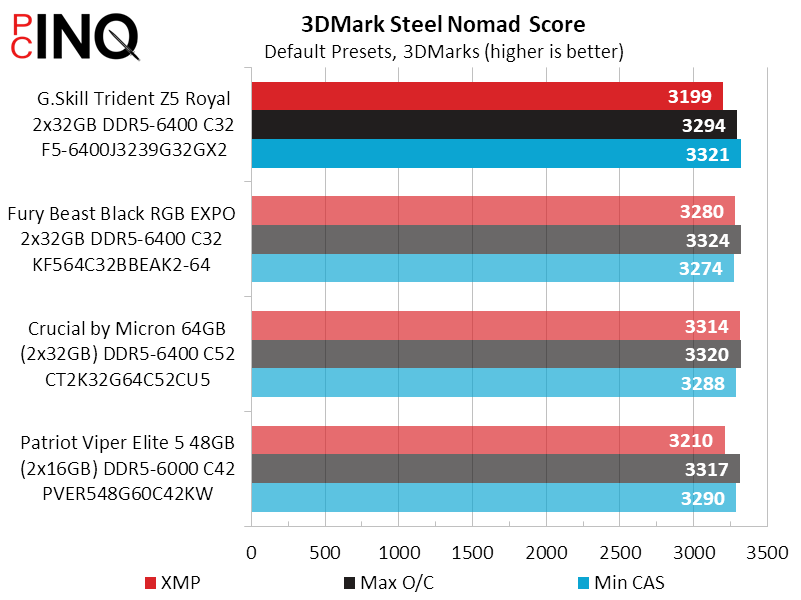
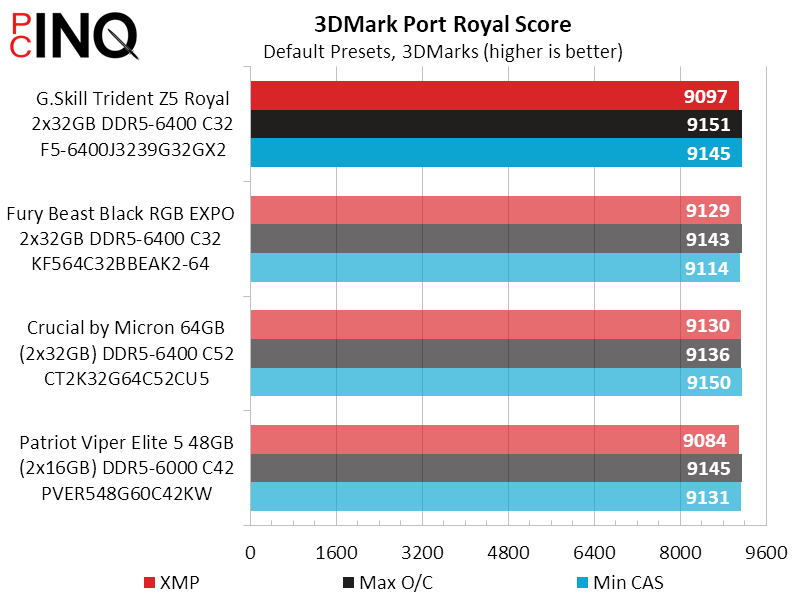
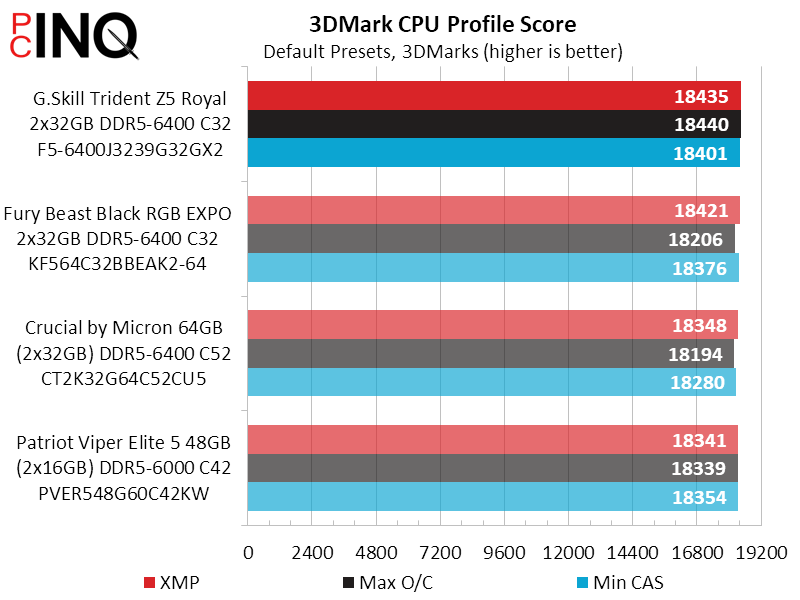
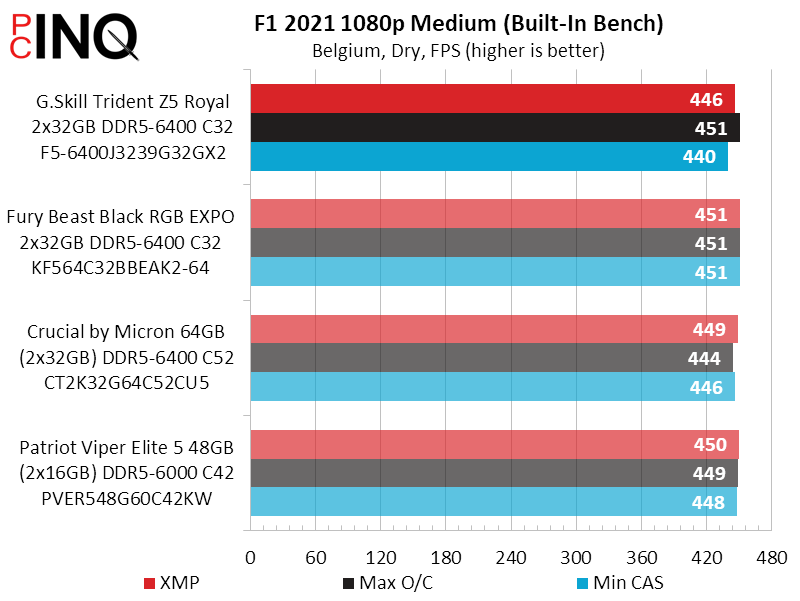
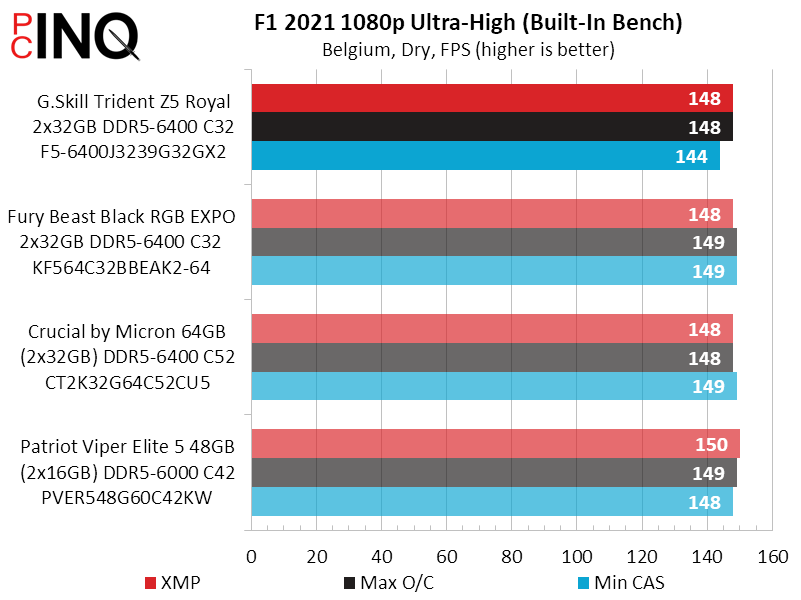
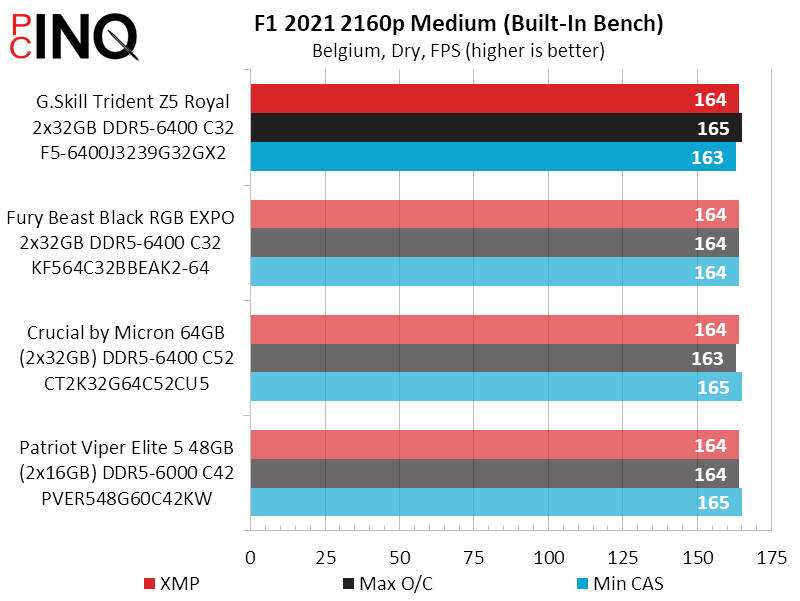
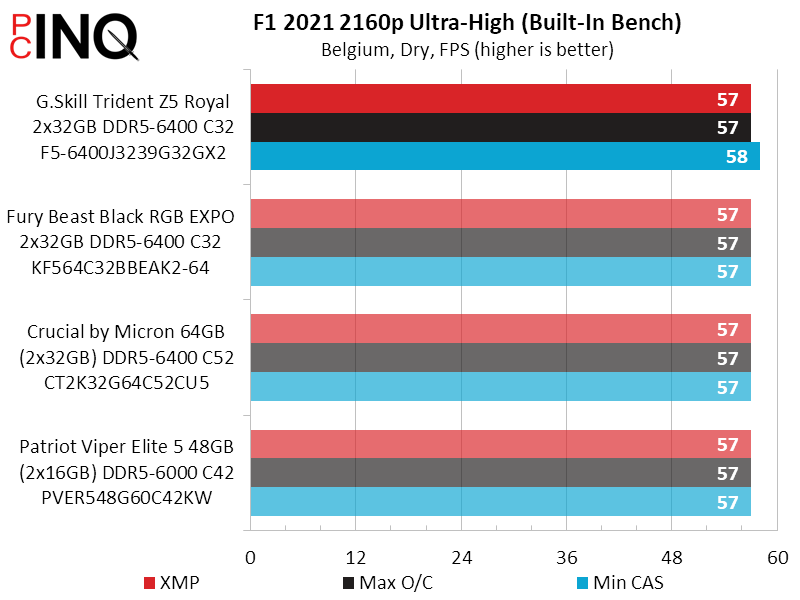
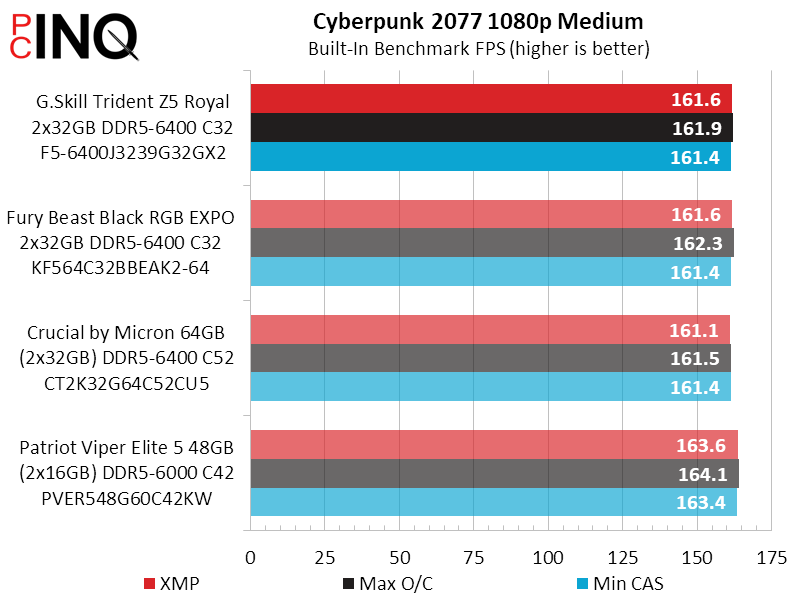
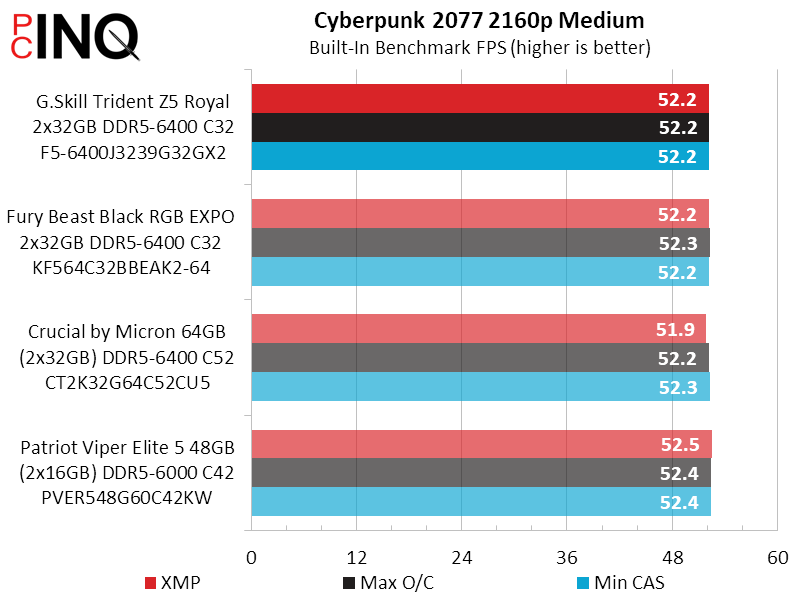
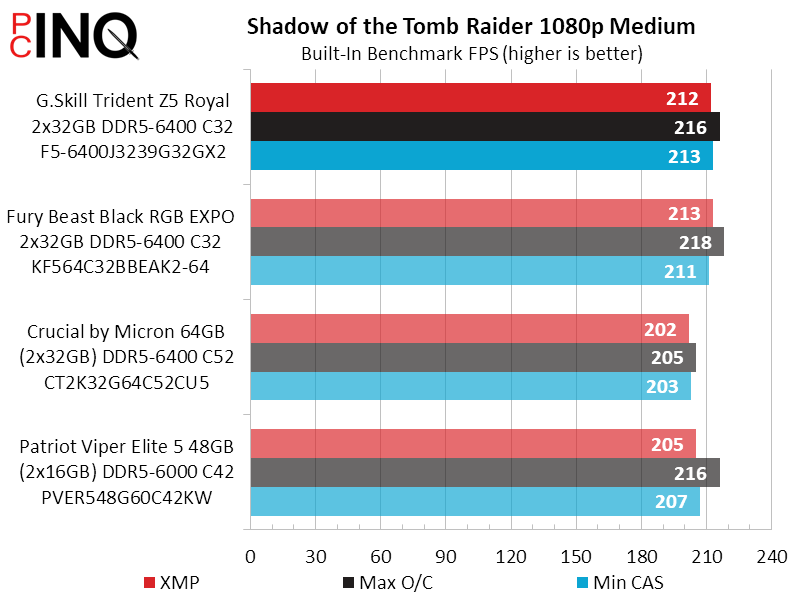
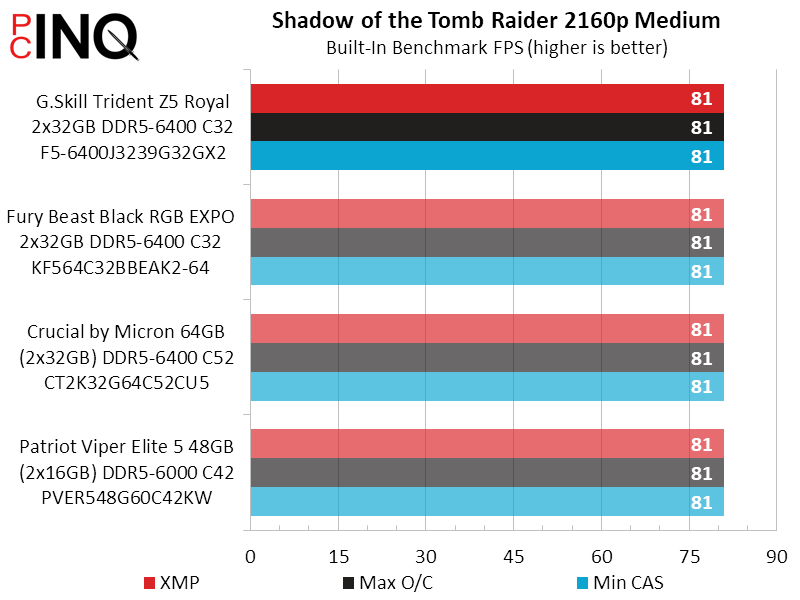
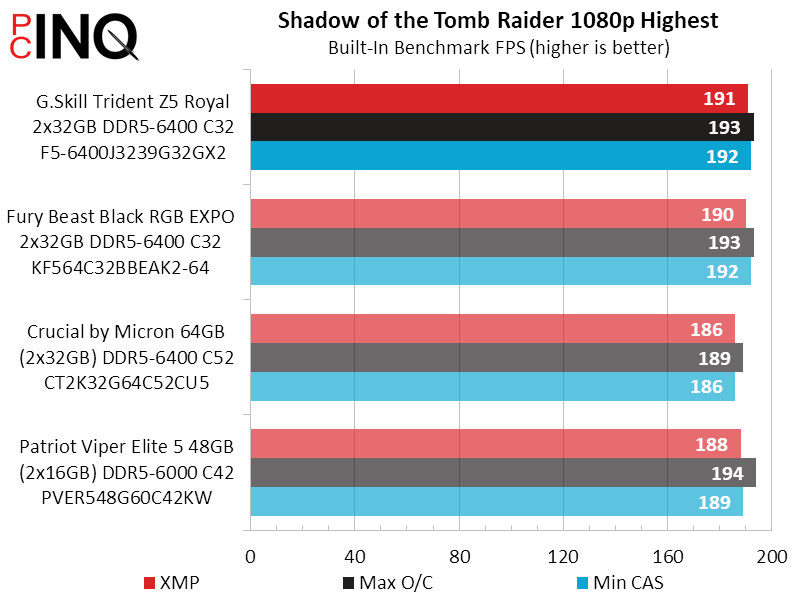
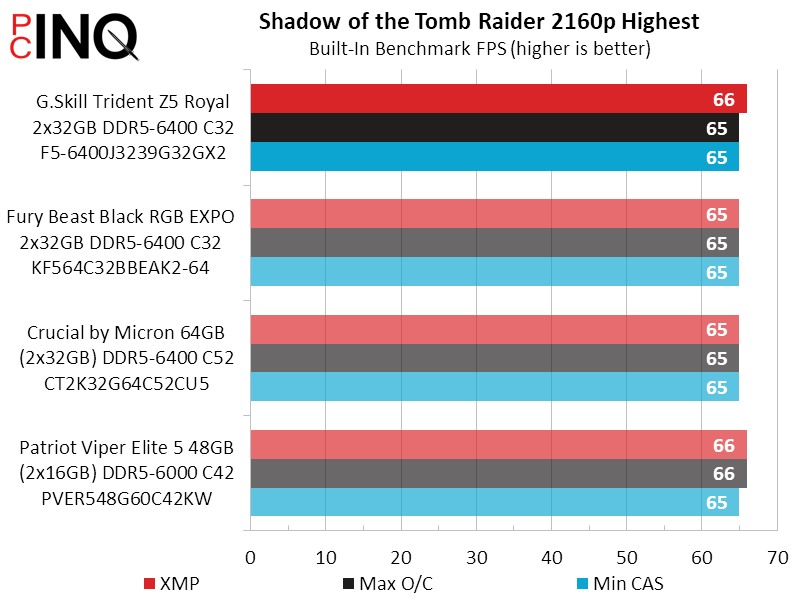
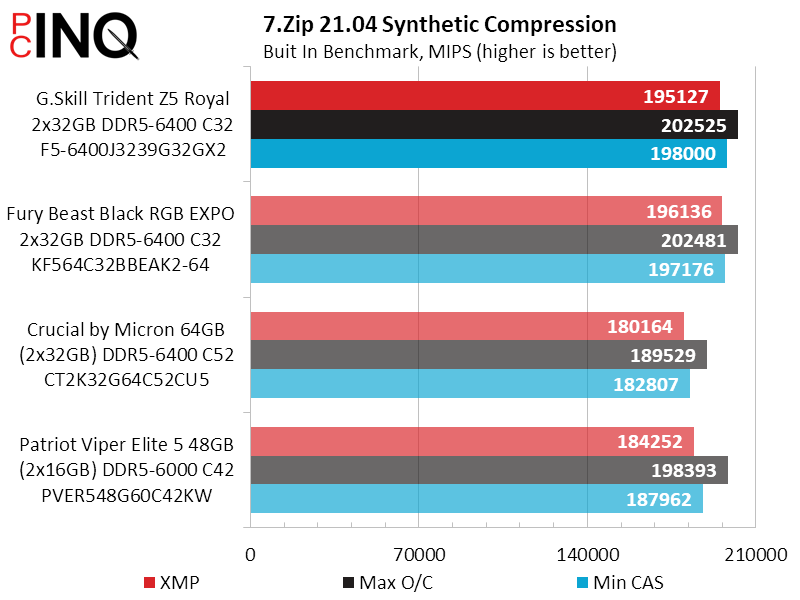
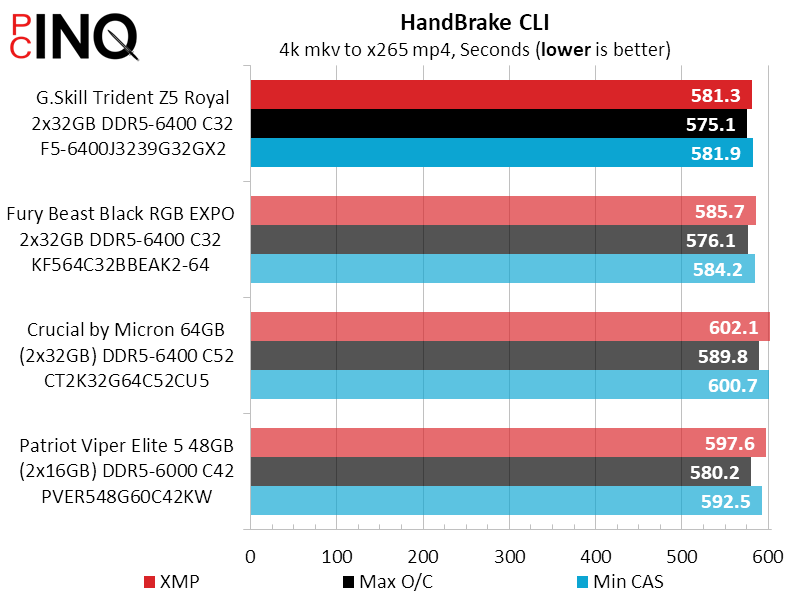
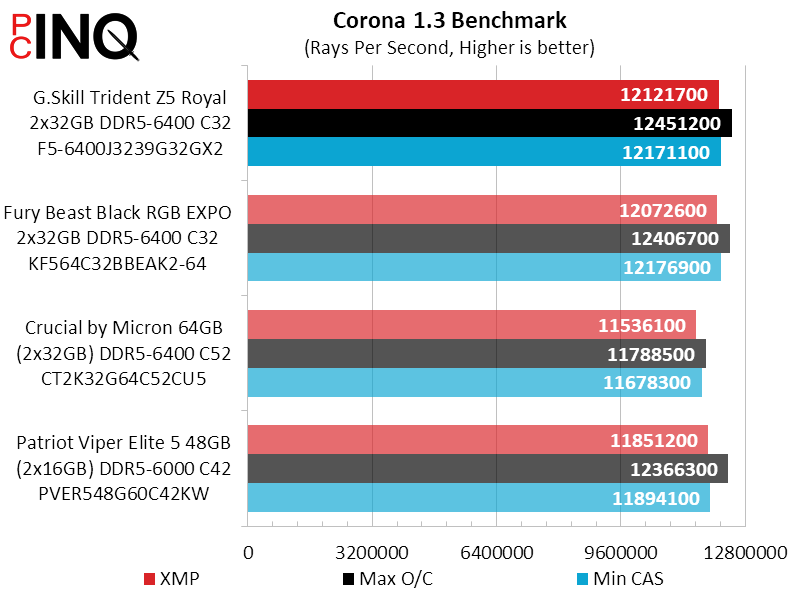
Had we tested the Trident Z Royal kit first, it would certainly have gotten the award that the Fury Beast had achieved, as both have annihilated our other kits in the benchmarks. Unfortunately, tying doesn’t do the job for taking an award already given to another product.
| G.Skill Trident Z5 Royal F5-6400J3239G32GX2 | |
| Pros | Cons |
| Superb XMP performance Excellent overclocking Low latency stable | Competitive price premium XMP-only (no EXPO) |
| The Verdict | |
| G.Skill’s DDR5-6400 C32 Trident Z Royal adds aesthetic panache to the legendary performance and tuning ability of Hynix’s top 16Gb IC’s. | |
For around $10 more than our previous top kit, Trident Z Royal provides better RGB and more luxuriant heat spreaders: While its top performance can’t go over that top, the Royal look should be a key consideration to anyone who wants to show off their Intel Core Ultra build.

